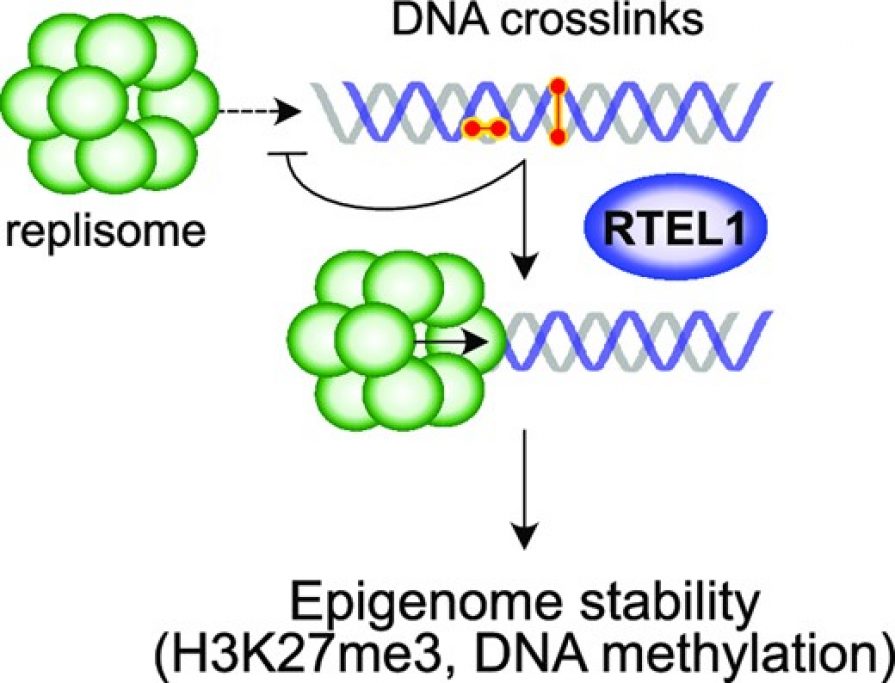RTEL1 is required for silencing and epigenome stability.
Auteurs :Olivier M , Hesketh A , Pouch-Pélissier MN , Pélissier T , Huang Y, Latrasse D, Benhamed M, Mathieu O
Transcriptional silencing is an essential mechanism for controlling the expression of genes, transgenes and heterochromatic repeats through specific epigenetic marks on chromatin that are maintained during DNA replication. In Arabidopsis, silenced transgenes and heterochromatic sequences are typically associated with high levels of DNA methylation, while silenced genes are enriched in H3K27me3. Reactivation of these loci is often correlated with decreased levels of these repressive epigenetic marks. Here, we report that the DNA helicase REGULATOR OF TELOMERE ELONGATION 1 (RTEL1) is required for transcriptional silencing. RTEL1 deficiency causes upregulation of many genes enriched in H3K27me3 accompanied by a moderate decrease in this mark, but no loss of DNA methylation at reactivated heterochromatic loci. Instead, heterochromatin exhibits DNA hypermethylation and increased H3K27me3 in rtel1. We further find that loss of RTEL1 suppresses the release of heterochromatin silencing caused by the absence of the MOM1 silencing factor. RTEL1 is conserved among eukaryotes and plays a key role in resolving DNA secondary structures during DNA replication. Inducing such aberrant DNA structures using DNA cross-linking agents also results in a loss of transcriptional silencing. These findings uncover unappreciated roles for RTEL1 in transcriptional silencing and in stabilizing DNA methylation and H3K27me3 patterns.

dans Nucleic acids research , vol. 51 - pp 8463-8479





